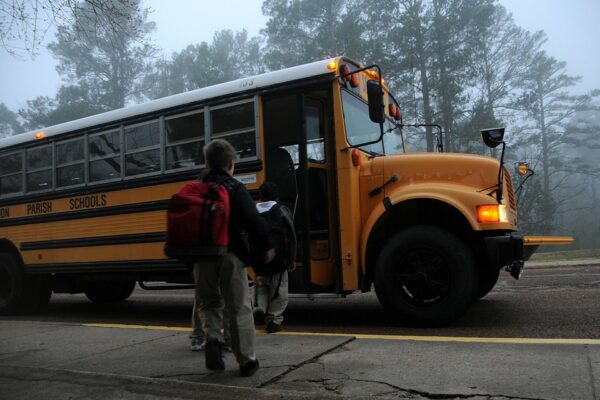by Harold Jordan and Ghadah Makoshi
Reposted from EndZeroTolerance.com
Interactions between young people and police don’t occur just on the streets of America. They are happening in our nation’s K-12 schools. Today, some 51% of all public schools have sworn law enforcement officers, 91% of whom carry firearms.
Typically, when controversies arise, police say, “Don’t blame us. We’re here because the school asked us to be here.” Educators say, “We cannot control what police do in our school — that’s a law enforcement matter.” As it turns out, education leaders can have more control over these interactions than they think.
Too often, school administrators adopt safety and policing measures that are not based on research, but that are assumed to make schools safer. Typically, police end up serving as school disciplinarians and young people end up with unnecessary involvement in the justice system, or they are physically harmed.
This is a nationwide problem.
At the ACLU of PA, we’ve been organizing dialogues with top-level school administrators and board members, called “school policing summits.” Our new report — Police and Pennsylvania’s Schools: What Education Leaders Need to Know — highlights this recent work with education leaders. In these summits, we brought together district leaders with school safety and disability rights experts and explored how education leaders can make informed decisions about school climate and the role of police.
Our main take-away from these summits is that education leaders have limited understanding of the possible consequences of student contact with police. This contact can take the form of an arrest and a possible adjudication of delinquency (the juvenile justice system equivalent of an adult conviction) or ticketing for more minor infractions (such as disorderly conduct or alcohol consumption). The latter, known as summary offenses or citations, results in convictions and fines in adult court, even when students are not arrested. Here, youth have fewer rights than in the juvenile system. For example, they have no right to an attorney.
The impact of a child’s involvement with the justice system can be far greater than a sentence imposed by a court. Any form of justice system contact creates a record. These records can follow youth throughout adulthood affecting future employment and school opportunities.
Ironically, in Pennsylvania, it may be more complicated to remove the records of summary convictions for minor offenses than for more major incidents that are handled by the juvenile system. A student has to disclose any unexpunged summary convictions if asked about convictions on a school or job application. It is not known how many school-related citations are issued in Pennsylvania schools. One investigation found that some 370 citations were issued by police in schools in one Central Pennsylvania county over an 18-month period.
At these summits, we also learned that education leaders often have little understanding of the formal arrangements with law enforcement, including agreements they approve, and their power to influence what’s in those agreements and the role of law enforcement in schools generally. By law, all Pennsylvania school districts are required to negotiate Memoranda of Understanding (MOUs) with area law enforcement. Most district leaders do not understand that they can use the MOU negotiating process to incorporate additional positive student support strategies into agreements with law enforcement and to push for limitations on police activities in schools.
School safety and disability experts shared other insights:
- Schools with police tend to be more focused on law and order and less focused on students’ social and emotional needs.
- Interactions between police and students with disabilities deserve special attention and scrutiny, as many devolve into the inappropriate use of restraints and harmful physical contact. Where police are present, the best practice is for school staff to share with police the strategies and accommodations needed for the student, not the disability diagnosis. This practice is recommended for all police dealings with students, not just students with disabilities.
- The regular presence of police in schools can lead to increased rates of student arrests, particularly for Black and Brown children and students with disabilities.
- Creating a safe school environment is about trust, support, and bonds — not necessarily law enforcement. Research on averted school shootings shows that students are more likely to share information on potential acts of violence when they feel supported, respected, and valued by adult staff at their school.
- Often there are alternatives to arrest that result in the reduction of school incidents and damaging justice system involvement for young people. Public agencies should fund and support these strategies.
- Data on student arrests and summary citations are often inaccurate and incomplete.
When district leaders have a better understanding of these issues — and their power to make change — they can adopt strategies that improve the school environment for students and staff alike.
Harold Jordan and Ghadah Makoshi are on the staff of the American Civil Liberties Union of Pennsylvania, where Harold is Senior Policy Advocate and Ghadah is Community Advocate.

